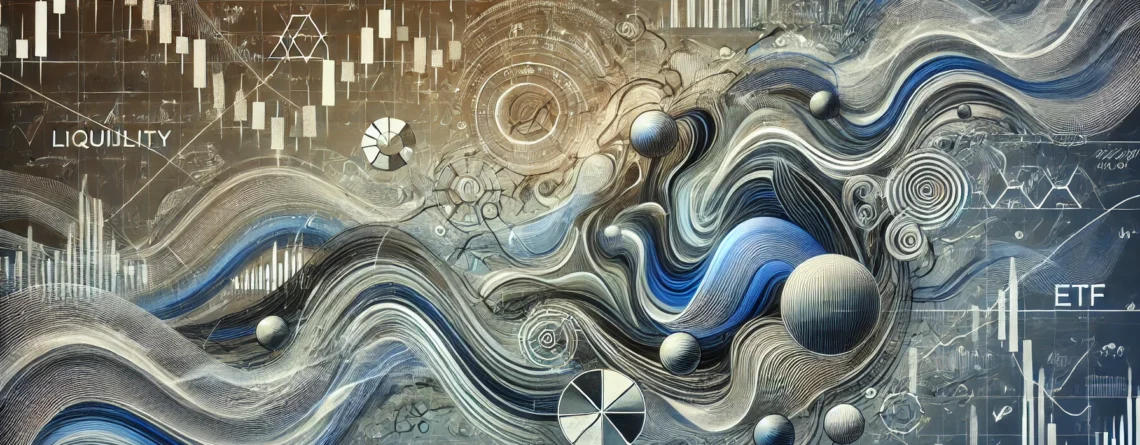How ETF Liquidity Works
When some investors view the trading volume of most exchange-traded funds (ETFs), they may be shocked to see such low volume trading on exchanges. They may take this as a sign the ETF has low liquidity. However, an ETF’s low trading volume on exchange isn’t an indication of its total liquidity. In fact, liquidity of the portfolio underlying an ETF determines its liquidity and not the exchange volume.
Most ETF volume trades off exchange by market makers who either create or redeem units as part of their liquidity role.
Before we begin, let’s put your financial knowledge to the test. Try out our free financial literacy quiz and see how you stack up!
How Market Makers Ensure ETF Liquidity
An ETF market maker is a financial institution or firm that facilitates trading in exchange-traded funds (ETFs) by continuously providing bid (buy) and ask (sell) quotes for ETF shares on stock exchanges. Their primary role is to maintain liquidity in the ETF market, ensuring that investors can buy and sell ETF shares with ease throughout the trading day.
If you are in need of investing expertise, fill out this free assessment questionnaire to determine if our family office services can help you efficiently manage your wealth!
How Market Makers Profit from Bid-Ask Spreads
Generally, market makers profit from the bid-ask spread. A bid-ask spread is the difference between the price at which they are willing to buy shares (the bid price) and the price at which they are willing to sell shares (the ask price).
But more importantly for ETFs, market makers also create new ETF units by exchanging the underlying portfolio of investments for ETF units when the ETF portfolio trades at a discount. Inversely, they may redeem ETF units in exchange for the underlying portfolio when the ETF trades at a premium.
If you have any investing or financial planning questions, feel free to contact us or consider scheduling a complimentary consultation with James Dunne.
Creation and Redemption of ETF Units by Market Makers
ETF market makers serve an important role within the ETF ecosystem. By taking advantage of premiums and discounts between an ETF’s traded price and the value of the underlying investments that make up the ETF; market makers can turn a profit. This profit motive gives ETF market makers an incentive to provide liquidity for investors.
Investors trading large amounts of an ETF can still get filled in most cases. This is true, even when they desire volume far more than is quoted on an exchange. This can be done by placing orders at a price that will incentivize market makers to create (or redeem) ETF units.
If you do not have an investment strategy, try out our free investment policy generator for some personalized guidance!
Market Maker’s Responsibilities:
- Providing liquidity: Market makers provide liquidity to the market by selling units to investors and purchasing units when investors sell.
- Creation and redemption of units: They create ETF units by delivering a basket of underlying securities to the ETF provider in exchange for a block of units of the ETF with the same market value. Inversely, they can also redeem units by exchanging them with the ETF provider for an equivalent basket of underlying securities.
- Maintaining market equilibrium: Creations and redemptions allow the ETF to be in equilibrium. This ensures that an ETF’s market price and net asset value (NAV) are closely linked.
- Buying and selling units to investors: By providing units for sale on the stock exchange at asking prices and post bid prices they will purchase units at for investors wishing to sell.
- A valuable partnership: Market makers ensure the market price of each ETF unit reflects the value of its underlying securities intraday.
How ETF Liquidity Functions in Practice
Say a wealthy individual investor identifies a specific ETF that meets their investment objectives. They place an order to purchase $5 million worth of it. But, when the investor studies the trading activity of the ETF, they notice the daily volume is less than then $5 million they desire. This doesn’t mean the investor is out of luck. It simply means their fills happen because of market makers instead of on an exchange.
How Investors Can Place Orders and Incentivize Market Makers
If the investor is acting on their own behalf, they could simply post their $5 million order to buy on an exchange with a limit price at a slight premium to the current ETF NAV. The amount of premium to NAV will provide an incentive for a market maker to fill the investor’s order at this price. Meanwhile, other investors might fill parts of the investor’s order themselves. Occasionally, fills are even provided by a broker’s own inventory. The likelihood of a fill is related to the amount of price incentive provided (premium to NAV).
How Brokerage Firms May Fill Orders Internally to Capture Fees
Alternatively, an investor using a full-service broker can instruct their broker to fill an ETF order at a market price determined by the broker’s trading desk. This means the broker’s trading desk fills the order directly (either by creating new fund units that they in-turn sell to the client, or by selling units out of the firm’s own inventory held for this purpose).
Whichever way fills take place, if the underlying investments that make up an ETF are liquid and easy to hold as inventory, many investment banks compete for this order flow. Fill prices must still meet regulatory requirements for “best price” when using the block execution method.
Exchange Volume: Just the Tip of the ETF Liquidity Iceberg
Understanding how ETF liquidity works is crucial for investors who trade ETFs. So, trading volume on exchanges may not be a reliable indicator of an ETF’s liquidity. Since, market makers play a critical role in maintaining liquidity by providing bid-ask quotes. Thereby, creating and redeeming ETF units. And, ensuring market equilibrium. After understanding the responsibilities of market makers and how ETF markets incentivize them to fill their orders. Investors can make informed decisions and trade with confidence. Ultimately, the partnership between ETF market makers and investors has benefits for the entire ETF ecosystem. This happens because market makers provide liquidity, transparency, and efficiency.
Don’t forget to subscribe to our free newsletter for valuable insights delivered monthly.





Leave a Reply